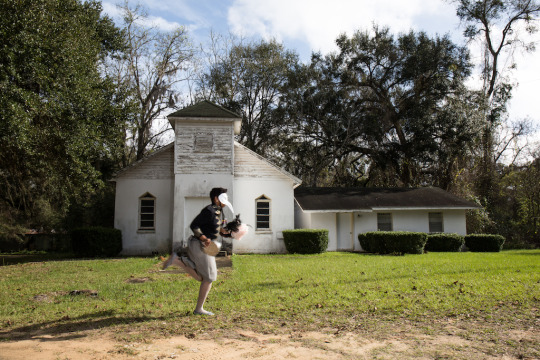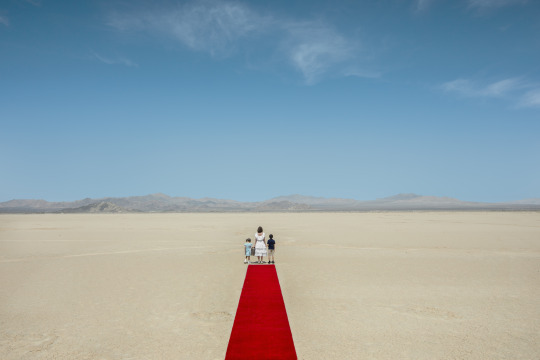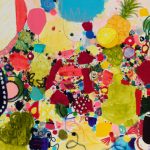Business of Art | Tackle Creative Block
Four generous and surprising ways to work through a creative impasse.
If you’re an artist of any discipline, you are surely well-acquainted with creative block. You may dread its coming at times, and appreciate its ability to challenge you to improve or innovate at others. Many factors can cause the blank state of creative block, including: exhaustion, a temporary lack of confidence in your ideas, or simply what many describe as the natural ebb and flow of creativity.
Whatever the cause, we’re including advice from a range of multidisciplinary artists in NYFA’s community to help you beat, harness, or simply sit with and accept creative block. Every creative person may find different strategies work for them at different times. The techniques you relied on two years ago may seem unhelpful today, and a strategy that works for you while you’re starting a new project at a residency may fall flat when you’re back at work, trying to squeeze your practice into a demanding schedule.
With a willingness to get creative about your creativity and experiment with new approaches like the ones below, you can have confidence that creative block won’t stick around forever.
Take a Break
Like our bodies, our minds need rest. If you keep hitting a wall, it’s not always helpful to persist with the same approach. There’s merit to the idea that putting your work down and doing a rote or physical task, like washing the dishes, showering, or taking a walk can help you become unstuck.
This kind of mentality can also apply to your long-term planning and your daily schedule. Comic artist and illustrator Maxine Worthy relates: “A good friend has begun to schedule ‘fallow periods’ after exhibitions and artist residencies. During the fallow period she doesn’t try to make “art” with a capital A. Instead she explores, plays, and looks for inspiration.” Accepting that you may not be able to sustain single-minded, focused activity full-time, week after week, could be a great first step to unleashing new sources of creativity.
While creating often and regularly is extremely helpful and productive, it’s also important to be patient with yourself sometimes. “In principle, regularity and discipline are nice ideals, but I feel that I’m a human being, not a robot,” says Hanna Varga of the collaborative sculpture duo Ashleaf. “Some days, weeks—despite my best intentions—I can’t be productive. All I can do is wait patiently until all that’s fallen apart comes back together again.”

Be Multidisciplinary
In addition to resting from a current project, try to step away from your primary medium or discipline, or your customary techniques, from time to time. When writer Danielle Krysa, known as The Jealous Curator, feels blocked, she rethinks her process “by trying to do the opposite of what I normally do—if you work small, go big—if you paint, try using clay.” Veering away from your creative routine can help you “let go of your typical tropes and INVENT something you’ve never come up with before,” confirms Design Matters founder and host Debbie Millman. In this way, creative block can be a blessing in disguise. It can make you more willing to experiment and fashion you into a more well-rounded creator, the virtues of which were recently extolled in Why Artists Who Dabble in Other Professions Find Success, an Artsy article inspired by David Epstein’s Range (Riverhead Books, 2019).
Embrace Constraints, Embrace the Random
There’s a reason why prompts are helpful. We all need instructions sometimes, a bit of guidance. And prompts that include a random restriction—like a poet writing a poem that can’t include verbs or the letter “o”— can be surprisingly fruitful. Try incorporating arbitrary rules as well. Krysa recommends rolling die and following their instructions, based on a few predetermined rules. She explains: “Roll dice and then walk or ride as long as the dice tells you to. 1 & 3 would be 13 minutes. Then get to your destination and sit for an hour, take it all in” by sketching, listening, or collecting impressions and sensory data.
Then, there’s always repetition. Wendy Perron (Fellow in Choreography ’85, NYFA Hall of Fame Inductee ’11) says dancers can “walk across the floor in 50 different ways” and see what happens, or a visual artist can try altering a photocopied image a set number of times, a technique inspired by Pop artist Trey Speegle.
The possibilities are endless but most constraints will help you cultivate a sense of openness, put less pressure on yourself, and open the door to inspiration.
Make Bad Work
The blame for your present creative standstill may rest squarely on an inner critic with too much power. If the pursuit of perfection is holding you back from creating anything at all, give yourself permission to create something that seems terrible. When illustrator Laura Baran allows herself to do this, she feels relief and thinks, “Now I’ve got momentum. And I might as well keep going and see what else I can do.” What’s more, you may be surprised when you revisit those “failures” later; they may provide fodder for something great or be the promising beginnings of a brand new creative direction.
– Mirielle Clifford, Program Officer, Online Resources
This article draws inspiration from #ArtistHotline, an initiative dedicated to creating an ongoing online conversation around the professional side of artistic practice. Our goal is to help artists discover the resources needed, online and off, to develop sustainable careers.
Have an arts career question? You can contact NYFA staff directly via the NYFA Source Hotline at (800) 232-2789, from Monday – Friday, 3:00 – 5:00 PM EST or email [email protected].
This initiative is supported by the Emily Hall Tremaine Foundation.
Images from top: Diana Markosian (Fellow in Photography ’19), Allison Janae Hamilton (Fellow in Interdisciplinary Work ’18)





